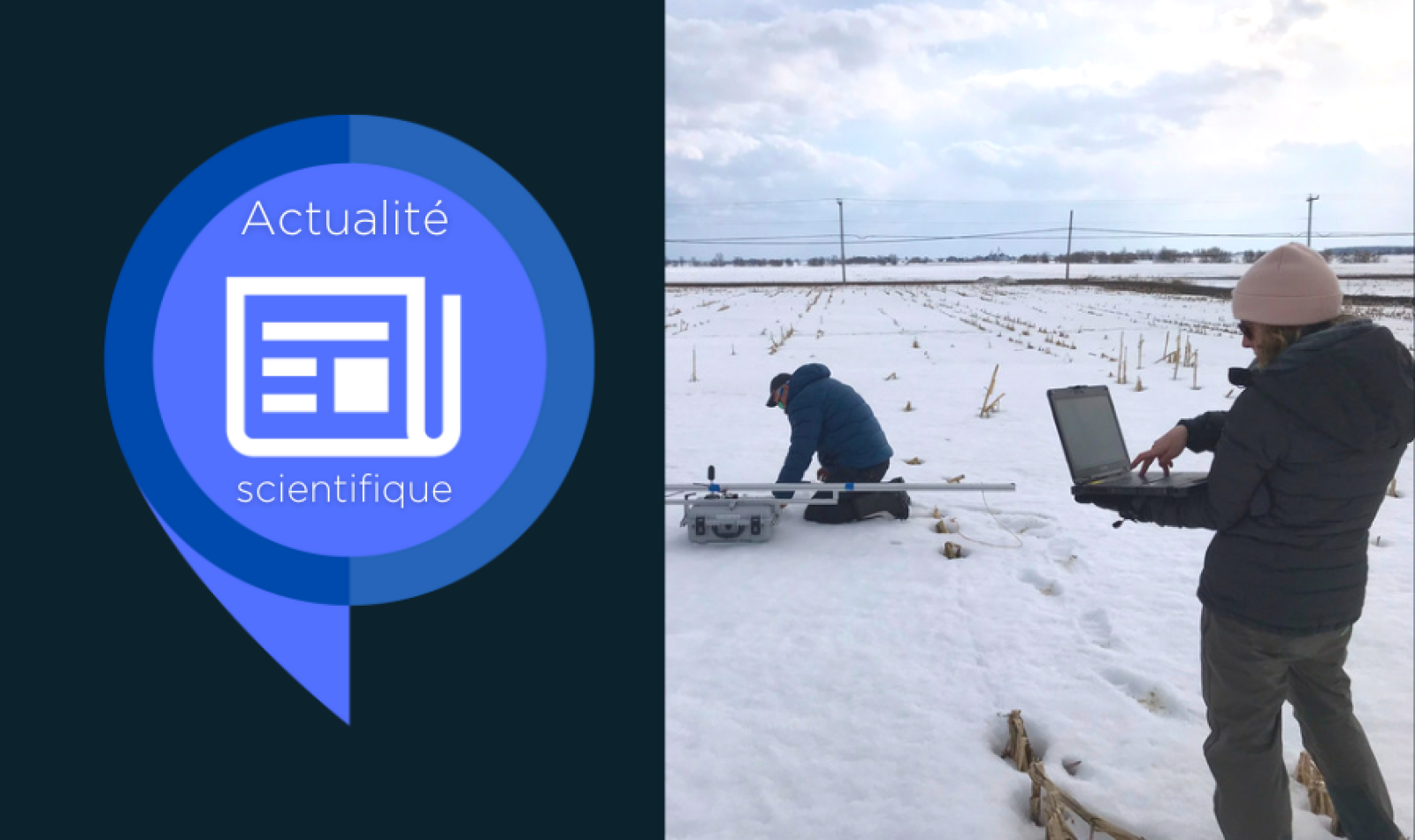
Detecting ice layers
An article by Valérie Levée, science journalist
Winter floods are localized, sudden, and often fly under the radar of weather forecasts. And yet they will increase with climate change. To predict them, we need to play in the snow and study its layers, as Michel Baraër, a professor in the civil engineering department at the École de technologie supérieure, does.
The starting point for flooding is not the overflowing river, but the snowpack in the river's watershed. This snowpack is not uniform but is stratified according to the amount of snow and rainfall.
Within the snowpack, the key to winter flooding is the presence of ice layers. These can be formed by freezing rain, of course, but even non-icing rain that soaks into the snow in the depths of winter will reach a level where it freezes to form an ice layer. Similarly, when a thaw melts the surface snow, the water that percolates through can freeze.
In either case, these ice layers are impervious. "When a major rain-on-snow event occurs, the water is blocked by the impermeable surfaces. It flows sideways and is transported, like on a highway, towards the streams and then the rivers," explains Michel Baraër. This influx of water from the snowpack increases river flow, but more importantly, part of this influx of water seeps under the ice. "This increases the pressure under the ice, and the weak points of the ice act as fuses, causing the ice to break up," continues Michel Baraër. Free ice blocks are carried by the current until they hit an obstacle, such as a bridge or a narrowing in the river. This is where the ice jam forms, blocking the flow of water. The river overflows, dragging the ice blocks with it and increasing the risk of property damage.
Temporal and spatial variability
Ice layers are not stable over time, evolving over the winter as water flows nibble and erode them until they disappear with the arrival of spring. Water can then infiltrate the snow cover, which becomes like a sponge, slowing the transport of water to the river. "We want to understand this interaction between the snowpack and the runoff, how the structure of the pack is affected by the runoff and how the affected pack will itself modify the runoff," explains Michel Baraër.
Even on a fixed date, the structure of the snow cover varies from place to place. For example, in a wind-swept field, the snow is often dense and crusted, whereas in a wind-protected clearing, the flakes fall quietly, forming a thicker but less dense mantle. "We know that the structure of the snowpack is important for water runoff, but our main difficulty is its heterogeneity in different parts of the watershed," notes Michel Baraër.
Due to a lack of knowledge, not all these phenomena are considered in numerical flood forecasting models. Michel Baraër has made this his preoccupation and, with his research team, aims to understand the relationships between thawing phenomena, the formation of ice layers, and the interactions between runoff and the structure of the snowpack, in different types of environments in a watershed, whether open or closed systems.
The shovel and the radar
Michel Baraër's experimental sites are in Sainte-Marthe, near Mont Rigaud. Here, armed with a shovel, his team digs pits in the snow to identify layers and take samples to measure density and water content, among other things. But these pits have a drawback: they break up the layers of snow, altering the flow of water and disrupting the phenomenon. Michel Baraër has therefore developed a non-destructive observation method using radar. He uses a wavelength at which the snow layers are partially transparent, meaning that some of the waves bounce back while others pass through the snow. "At each discontinuity, when there's a different layer, the properties are different, there can be a bounce," he explains. The waves first bounce off the snow surface, the last bounce indicates the ground surface, and the bounces in between indicate the presence of ice layers. These measurements were taken in forests, clearings, and agricultural plains. A link between the structure of the snow cover, the presence of ice layers and the consequences for the adjacent stream has yet to be established. For this reason, sensors are being installed to measure the flow of water and to estimate the speed at which water flows from the snowpack into the stream.
With these studies, Michel Baraër hopes to gain the knowledge needed to understand under what circumstances a winter rainfall will lead to flooding. The ultimate goal with this knowledge," he hopes, "is to have models that take these phenomena into account to say that there is a risk of winter flooding in this region at this time, because we know that a rainy episode is coming, and that the snowpack is in a configuration that favors lateral flows.
To learn more :
Dharmadasa, V., Kinnard, C., and Baraër, M. (2023). Topographic and vegetation controls of the spatial distribution of snow depth in agro-forested environments by UAV lidar. The Cryosphere, 17 (3) 1225-1246
https://doi.org/10.5194/tc-17-1225-2023
Paquotte, A. and M. Baraër, M. (2022). Hydrological behaviour of an ice‐layered snowpack in a non‐mountainous environment. Hydrological Processes, 36 (1), e14433
https://doi.org/10.1002/hyp.14433
Valence, E., Baraër, M., Rosa, E., Barbecot, F., and Monty, C. (2022). Drone-based ground-penetrating radar (GPR) application to snow hydrology. The Cryosphere, 16 (9), 3843-3860
https://doi.org/10.5194/tc-16-3843-2022
 Science News
Science News
Spotlight on Northern Research | An initiative of Institut nordique du Québec
To celebrate Quebec's excellence in northern research and to highlight the various challenges and issues related to these territories, Institut nordique du Québec offers you a series of articles dedicated to the research conducted in its community.
Over the months, you will discover a multidisciplinary research community whose strength lies in the complementary expertise of its members. You will meet individuals who share a strong attachment to the North and who are dedicated to producing, in collaboration with the inhabitants of the region, the knowledge necessary for its sustainable and harmonious development.
You are invited to relay this and subsequent articles to your network, thus enabling the greatest number of people to discover the different facets of northern research and the many faces that animate it. Together for the North!

